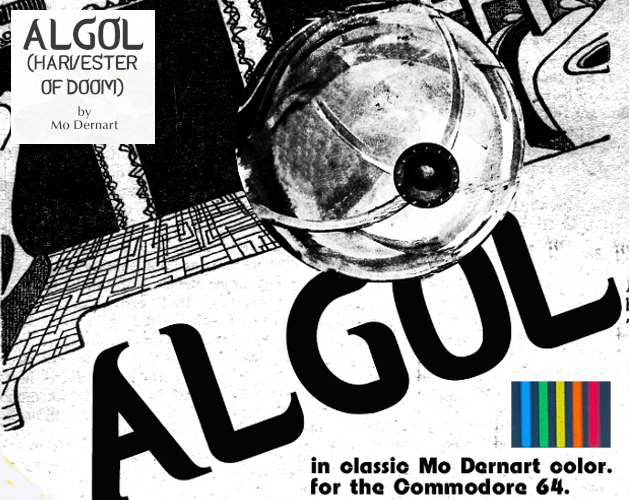- Commodore 64 Development Tools for Mac OS X. Ask Question Asked 7 years, 11 months ago. Active 6 years, 9 months ago. Viewed 7k times 5. Which tools do you use for cross-development for C64 on OSX? Which assembler, text editor or IDE, gfx, sprite, charset editors? Or do you simply prefer Windows environment via parallels desktop or bootcamp?
- VirtualC64 is a user-friendly Commodore-64 emulator. It utilizes a cycle-based simulation engine to achieve high compatibility. Although cycle-accurate emulation consumes more computing time than, e.g., line-based emulation, all modern machines provide enough.
- MacinTalk (v1.0.2) was relased on April 15, 1985 and works on Mac OS 1.x to Mac OS 6.x. MacinTalk 2 and MacinTalk Pro (both v1.2) were released in 1994 for Mac OS 6 or 7 and were almost immediately made obsolete by MacinTalk 3. MacinTalk 3 (v1.4) was released in 1995 and became Apple's TTS standard until OSX and is part of Mac OS 7, 8 and 9.
The SourceForge Algol 68 project preserves and promotes Algol 68 by making available open source Algol 68 implementations and documentation. Currently, two implementations are available from this project: » Algol 68 Genie (a68g) is a recent checkout hybrid compiler-interpreter, written from scratch by Marcel van der Veer.
Algol (c64) Mac Os Catalina
Commodore C64 Emulator for Mac OS X
Algol (c64) Mac Os Download
Commodore 64 / C64 - It is in the year 1982 that Commodore 64 was introduced by Commodore International Ltd. to the market. Many users prefer this system over the PC because it comes in many features and advantages. Basically, the reasons behind its popularity are its affordability, the use of 16 colors, and the SID Chip (the built-in 3 channel device for its sound). After its sales went down in 1993, more systems were developed in relation to its features and characteristics.
MacVICE - Together with Commodore 64, this emulator also emulates Commodore 128, VIC-20, PLUS4, CBM-II/C610, and almost all PET models. Its latest version can be used for X11 and it has some Cocoa version that is still under development.
Power64
This emulator runs in PowerPC with Mac OS X. It emulated Commodore 64 but can only be used for Mac. It also has some restrictions in using until a full registration for its use will be made.
Back to the pandemic mac os. This is a user-friendly emulator for Intel Macs that emulates the Commodore64. Though its compatibility is not quite impressive as the other emulators available for Commodore 64 and is still in Beta release, its makers are claiming that it improves every time that it is released.
Frodo
This is an emulator of the Commodore 64 under the platform for Macintosh. It is a universal binary and runs under Mac OS 10.4 and other preceding versions. Since it is a creation of Richard Bannister, it also needs an Emulator Enhancer to enjoy added feature. According to him, it is overcome by Power64 in performance. However, it was also considered by many as the leading emulator for Commodore 64 under the Mac system.
Algol (c64) Mac Os X
Features:
- C64 emulator for OS X.
Commodore64 Emulator
Requirements:
- OSX Games + Apple OS X Games & Emulators
Programming languages, believe it or not, have existed for over 200 years, since the invention of the punch-card-programmable Jacquard loom. It wasn't a programming language in the modern sense — there was no computation and no logic — but it started a cascade that would eventually lead to Charles Babbage's Analytical Engine, and Ada Lovelace's 1842 deconstruction of his work which led to the first computer program.
It was a whole 100 years before the first electrical, programmable computers would burst into existence, however. Machine-specific assembly language in the 1940s was probably the first (vaguely) human-readable programming language, but by the 1950s computer engineers realized that assembly language was far too laborious and error-prone to build entire systems out of — and thus in 1955 the first modern programming language was born: FORTRAN (FORmula TRANslator). LISP (LISt Processor), ALGOL (ALGOrithmic Language), and COBOL (COmmon Business Oriented Language) would follow in the next few years — and as they say, the rest is history. Almost every language today is a derived from one of these first four languages — and indeed, FORTRAN, LISP, and COBOL are still actively used by large, lumbering institutions like the National Weather Service and the US Postal Service.

By 1964, BASIC had been invented, and then C was released in 1969. Unix was famously re-written into C — the first major OS to not be written in assembly language — and today, Linux is written almost entirely in C, and both Windows and Mac OS X have large swaths of their code written in C.
For the rest of the history of modern programming languages — because C was really just the beginning! — check out the infographic below. You can click it to zoom in.
Of ice & snow mac os. Read more about the history of programming languages

